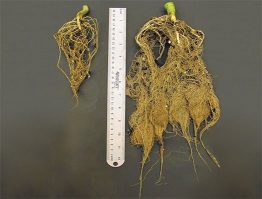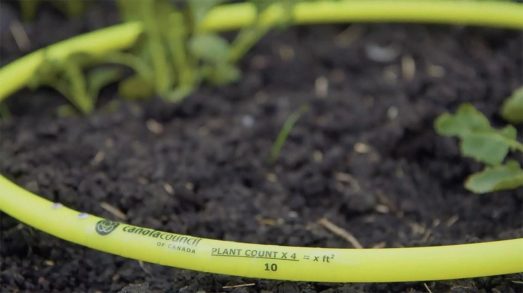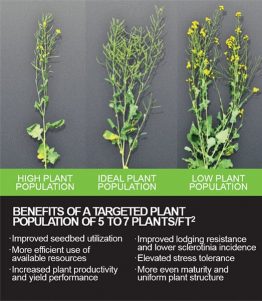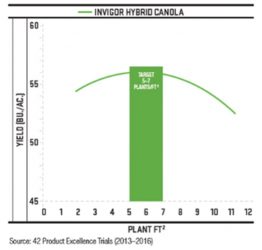Agronomy Insights
Sharing our achievements with the USCA
By Clint Jurke


I was honoured with an invitation to speak about Canadian canola production at the U.S. Canola Association’s National Canola Research Conference in Baltimore in November. It is always nice to talk about canola outside of our country – and even nicer to be able to highlight some of the impressive gains that canola has made in Canada. Our average yield in the last three years is above 40 bu./ac., compared to 34 four years ago. Focusing our efforts on the areas that hold back our yield potential may help get us to 52 bu./ac. target by 2025 – which would really be worth bragging about internationally.
The conference was held in conjunction with the American Society of Agronomy’s annual conference. There is a lot to learn. Like, did you know that winter canola roots are much more vigorous than the roots from our spring-type canola? Yep. So, canola researchers in North Dakota are determining how to make the spring-type root better, since bigger roots may mean bigger yields. Or, did you know that zero-till farmers in Brazil use higher pressure lime-injection equipment? Yep. That would be a cool thing for liming soils in Alberta to help reduce clubroot damage.
You can read more about National Canola Research Conference highlights at uscanola.com.
canolaLab becomes combine college
CanoLAB 2019 is taking on a more specific focus – combining.
Key learnings will address:
- What are combine loss monitors telling us? And how accurate are they?
- What are our actual threshing losses? How do we properly check them? And what are some tips to reduce them in various weather and crop conditions?
- Functional tips for all major manufacturers’ combines.
- How are our crops graded and why should producers care? What are all of the grading factors and tolerances?
- Getting the most out of pre-harvest aids.
- After-market options for combines.
- Straight cut header options.
The Combine Colleges are hosted by the Canola Council of Canada and funded by growers through provincial grower associations. Dates were not finalized when this magazine went to print, but look at the events listing at canolacouncil.org for updates.
New stand establishment video at the research hub

Some people prefer to learn by reading, while others prefer watching a demonstration or listening. The new 86-second “Stand Establishment” video at the Canola Research Hub (found in the videos section of the ‘Media’ tab at research.canolacouncil.org) offers all three learning methods. Watch agronomist Brittany Hennig demonstrate how to determine a plant count using a quarter-square-metre hula hoop and a couple of quick calculations, and see some examples of different plant stands.
In addition, Brittany suggests using the Canola Council of Canada’s Canola Calculator at canolacalculator.ca to determine your target plant density, seeding rate, plant survival and plant density. Play around with different scenarios to update your notes on the previous season and to prep for next year.
The stand establishment video is one of many at the Canola Research Hub. Want to reduce your risk of any canola storage issues this winter? Watch the quick and informative “Storage Management” video with PAMI’s Lorne Grieger.
Checking out these resources during the winter can be a great way to save yourself some time in the busy growing season. Plus it lets you look at outdoor plants when its snowy and cold outside! You’ll be extra ready for spring when it arrives.

BASF promotes target populations


InVigor RATE is a canola seeding rate recommendation that helps growers adapt to a Target Plant Population (TPP). This helps maximize the agronomic performance, yield and consistency of InVigor hybrid canola. Demonstrated through large-scale field research by BASF’s Product Excellence team, seeding to achieve a TPP is proven to help optimize yield and agronomic considerations such as reduced lodging and disease incidence, strong weed competition and resource utilization. Based on this research, BASF recommends targeting a plant population of five to seven plants per square foot.
Assuming a standard survivability of 50 to 70 per cent, the desired plant population can be achieved by seeding 10 seeds per square foot. Look for InVigor RATE videos at the BASFAgSolutions YouTube channel.
Sign up for canola watch
Canola Watch is a timely agronomy email from the Canola Council of Canada agronomy team. It provides field observations and agronomy tips throughout the growing season. To receive this valuable tool, funded by levy dollars, go to canolawatch.org/signup.
Get to know your CCC Agronomy Team
Find the whole team at canolawatch.org/contact-us.
 Shawn Senko
Shawn Senko
Agronomy Specialist, NE Saskatchewan
Contact: 306-270-9307 and
senkos@canolacouncil.org
Twitter: @SenkoCCC
Specialty: Machinery, precision ag
and big data
 Dan Orchard
Dan Orchard
Agronomy specialist, Central Alberta North
Contact: 780-777-9923 and
orchardd@canolacouncil.org
Twitter: @OrchardCCC
Specialty: Clubroot and crop tours
 Justine Cornelsen
Justine Cornelsen
Agronomy Specialist, Western Manitoba
Contact: 204-298-4364 and
cornelsenj@canolacouncil.org
Twitter: @CornelsenCCC
Specialty: Blackleg






